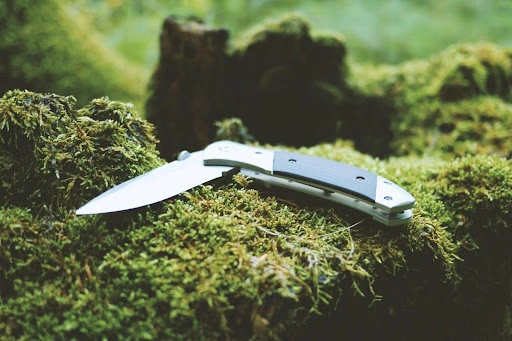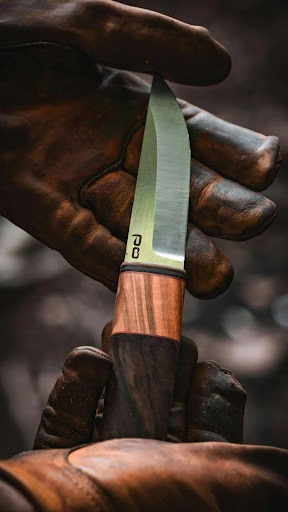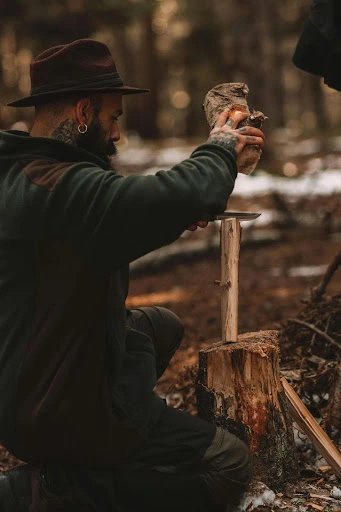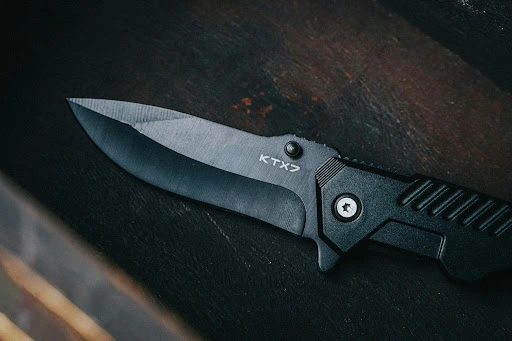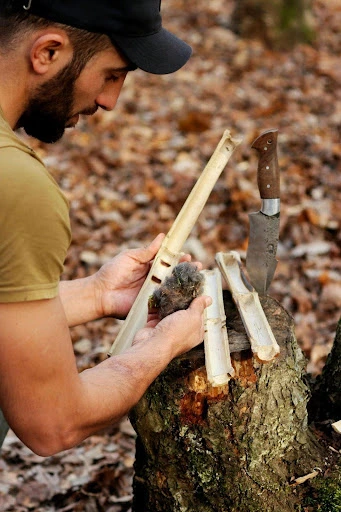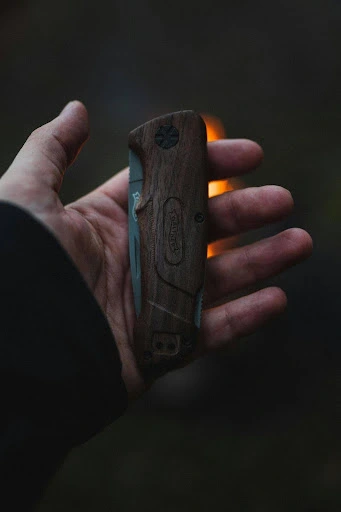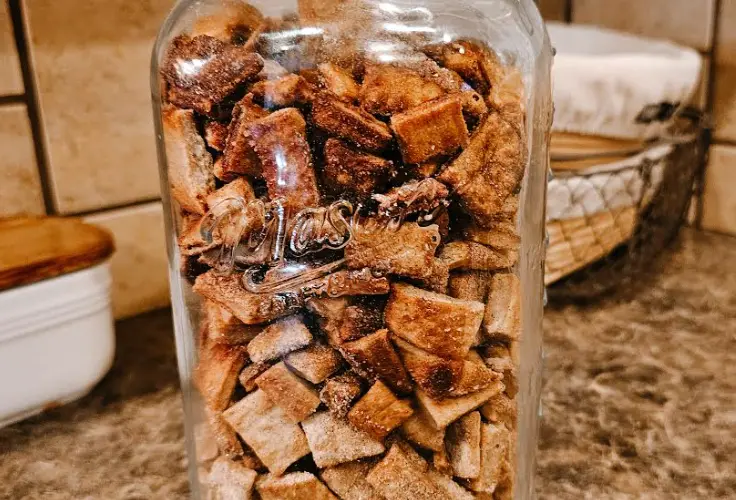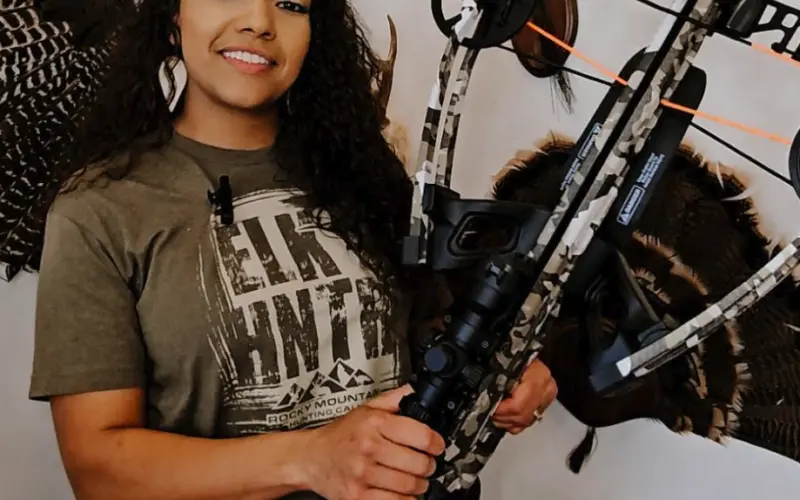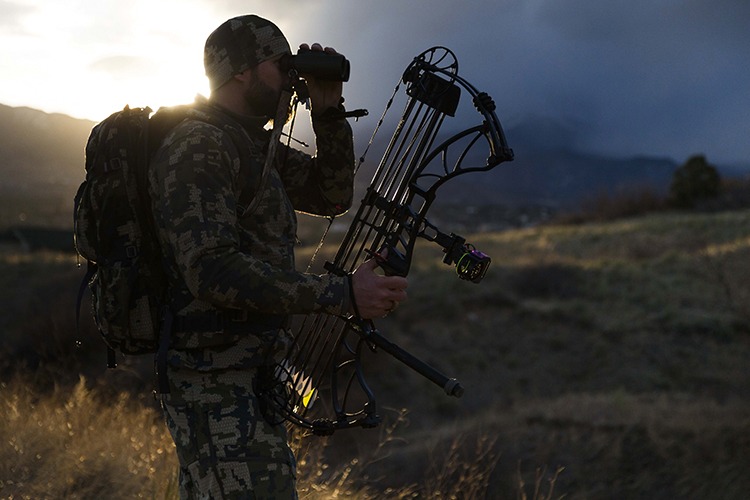Every outdoorsman (or woman), camping enthusiast, hunter, and even hikers I’ve met all have one thing in common: they carry a knife at all times. It’s more than just for safety, a knife allows you to do a lot of tasks out in the wilderness. For everything from starting a fire to cleaning your catch in the field, a knife is a necessity for it all.
There are so many choices on the market right now that it may seem like a monumental task just to choose the right knife for you. Luckily, the breakdown isn’t as tough as you may think and this guide will give you a basic idea of what you want to look for in a knife for your situation.
Table of Contents
Types of Knife Tangs
You’ll hear the word “tang” being thrown around a lot, and no I don’t mean the orange drink that Alaskans like to drink hot. In this case, tang refers to the portion of the knife blade that extends into the handle, providing the stability and balance needed for the knife to perform the task.
Different types of tangs can significantly impact the durability and performance of your knife. Here is a breakdown of the various categories you may encounter:
Full Tang
A full tang knife means that the blade extends the entire length of the handle, providing maximum strength and durability. This construction is ideal for heavy-duty tasks such as chopping wood or prying objects. The full tang design ensures that even if the handle breaks, you still have a usable blade. For example, when building a shelter, a full-tang knife can withstand the pressure of cutting through thick branches without snapping.
Rat-Tail Tang
The rat-tail tang is a thin version that runs through the handle. While not as strong as a full tang, it’s lighter and easier to maneuver. This type is suitable for tasks that require precision rather than brute force, such as carving or detailed work on traps and tools. Think of it as your go-to knife for intricate tasks where control is more important than sheer strength.
Push Tang
In a push tang design, the blade extends only partially into the handle and is often glued or fastened. While this makes the knife lighter and cheaper, it’s less durable for heavy tasks. However, it’s perfect for light duties like slicing fruits or vegetables when camping. If weight is a concern and you don’t plan on using your knife for rigorous tasks, a push-tang knife might be a good fit.
Blade Shapes for Camping Knives
Much like the tang of a knife, there are several different blade shapes as well. This is very important as what you’ll be able to do with the knife will be impacted by its overall shape.
Here is a look at the blade shapes you’ll see in the market.
Drop Point
The drop point blade features a convex curve on the back of the blade, making it versatile for a variety of tasks. Its broad belly is excellent for slicing, while the point is robust enough for heavier tasks like skinning games. For instance, if you’re hunting and need to gut and clean your catch, a drop point blade offers the strength and control needed for these precision tasks.
Clip Point
A clip-point blade has a thin, sharp tip that is ideal for piercing and detailed cutting. The shape allows for better control when performing intricate tasks, such as preparing food or carving wood. If you find yourself needing to puncture materials or perform fine-detail work, the clip-point blade is your best bet. Picture yourself slicing through thick rope or carving a wooden spoon—this blade shape excels in those scenarios.
Tanto
The tanto blade is characterized by its strong, angular shape, which is excellent for piercing tough materials. Originally designed for combat, it’s also useful for prying and scraping tasks in a survival situation. If you need a knife that can double as a tool for heavy-duty puncturing and prying, the tanto blade is an excellent choice. For example, if you need to break through a tough shell or pry open a container, the tanto blade’s design is highly effective.
Spear Point
The spear point blade is symmetrical, with both edges meeting at a central point. This design makes it highly effective for piercing and thrusting tasks. Its balanced shape provides excellent control, making it ideal for detailed work such as carving or puncturing. For example, if you’re setting up camp and need to create precise holes in leather or fabric, a spear point blade gives you the accuracy required.
Sheepsfoot
The sheepsfoot blade features a straight edge with a spine that curves down to meet the edge, eliminating any sharp point. This design is ideal for precision slicing tasks while minimizing the risk of accidental punctures. For instance, if you’re preparing food or cutting rope in a rescue situation, a sheepsfoot blade offers the safety and control needed for clean cuts.
Wharncliffe
The Wharncliffe blade has a straight edge with a spine that gradually tapers to the tip. This shape provides a strong, manageable point for precision tasks. It’s especially useful for controlled slicing and cutting. For example, when you’re out in the field and need to whittle wood for a fire starter, a Wharncliffe blade makes quick work.
Trailing Point
The trailing point blade has a spine that curves upward, creating a long, curved belly perfect for slicing. This design is particularly useful for skinning and fileting tasks. For example, when you’re fishing and need to filet your catch, a trailing point blade offers the flexibility and sharpness needed for smooth, precise cuts.
Hawkbill/Karambit
The hawkbill or karambit blade is curved like a hawk’s beak, featuring a concave edge. This design excels at pulling cuts and utility tasks, such as cutting ropes or vegetation. For instance, if you’re in the wilderness and need to clear a campsite quickly, a hawkbill blade provides the leverage and efficiency required for these demanding tasks.
Knife Edges and Their Uses
Don’t forget about your edge types too! Here are the types of edges and what to keep in mind when choosing one.
Straight Edge
A knife with a straight edge provides clean, accurate cuts, making it perfect for slicing and whittling.
It’s easier to sharpen and maintain compared to serrated edges. If you’re planning on tasks like food preparation, creating feather sticks for fire-starting, or shaving wood, a straight-edge knife is indispensable. Imagine preparing a meal at your campsite; a straight-edged knife will slice through vegetables and meat effortlessly, making meal prep a breeze.
Serrated Edge
Serrated edge knives are perfect for cutting through tough, fibrous materials like rope or thick fabric. The saw-like teeth grip and tear through materials that a straight edge might struggle with. However, sharpening a serrated edge can be difficult if you don’t have a specialized sharpener. If you foresee tasks like cutting through rope to set up a hammock or slicing through dense vegetation, a serrated edge knife will serve you well.
Combination Edge
A combination edge knife features both straight and serrated sections, offering versatility for various tasks. This dual-purpose blade is great for campers who want a single knife to handle multiple situations. You can use the straight edge for precision tasks and the serrated portion for tougher cuts. Picture yourself needing to cut both rope and food; a combination edge knife allows you to switch between functions without changing tools.
Common Types of Metal Used in Camping Knives
Stainless Steel
Pros:
- Corrosion Resistance: High resistance to rust and corrosion, making it ideal for wet or humid environments.
- Low Maintenance: Requires less maintenance compared to high-carbon steels.
- Durability: Generally strong and durable for a variety of tasks.
Cons:
- Edge Retention: Does not hold an edge as well as high carbon steel.
- Sharpening: Can be more difficult to sharpen compared to some other metals.
Scenarios:
Stainless steel is excellent for camping in coastal or river environments where the knife is likely to be exposed to moisture. For example, if you’re camping near a lake and need a knife that can handle both preparing food and cutting through the fishing line without worrying about rust, stainless steel is an ideal choice.
High Carbon Steel
Pros:
- Edge Retention: Holds a sharp edge longer than stainless steel.
- Ease of Sharpening: Easier to sharpen to a razor edge.
Cons:
- Corrosion: More prone to rusting and corrosion, requiring regular maintenance.
- Maintenance: Needs to be kept dry and oiled to prevent rust.
Scenarios:
High carbon steel is perfect for tasks requiring a consistently sharp edge, such as carving or cutting wood. If you’re deep in the woods and need a reliable blade for building shelters or carving tools, a high-carbon steel knife is advantageous due to its superior sharpness and edge retention.
Damascus Steel
Pros:
- Aesthetic Appeal: Unique, patterned design that is visually appealing.
- Edge Retention: Good balance of hardness and flexibility.
- Strength: Combines properties of different steels, enhancing overall performance.
Cons:
- Cost: Typically more expensive due to the intricate manufacturing process.
- Maintenance: Requires careful maintenance to prevent rust and maintain aesthetic quality.
Scenarios:
Damascus steel is often chosen for its beauty and performance, making it a great choice for collectors or those who appreciate craftsmanship. In scenarios where presentation and performance are both valued, such as wilderness survival courses or camping trips that also involve educational demonstrations, Damascus steel knives shine.
Tool Steel
Pros:
- Toughness: Extremely tough and resistant to wear and tear.
- Edge Retention: Excellent at holding a sharp edge under heavy use.
Cons:
- Corrosion: Prone to rust if not properly maintained.
- Weight: Much heavier than other types of steel.
Scenarios:
Tool steel is suitable for heavy-duty tasks like batoning wood or chopping. If you’re engaging in intensive activities like bushcraft or survival training, where the knife will be subjected to rigorous use, a tool steel knife provides the toughness and durability required for such demanding tasks.
Titanium
Pros:
- Lightweight: Much lighter than steel, reducing carry weight.
- Corrosion Resistant: Highly resistant to rust and corrosion.
Cons:
- Edge Retention: Doesn’t hold an edge as long as steel.
- Cost: Generally more expensive than stainless or high carbon steel.
Scenarios:
Titanium is ideal for ultralight backpacking or camping trips where every ounce matters. For instance, if you’re hiking long distances and need to minimize the weight of your gear, a titanium knife offers a good balance of utility and lightness.
Ceramic
Pros:
- Sharpness: Exceptionally sharp and maintains edge for a long time.
- Corrosion Resistance: 100% resistant to rust and corrosion.
Cons:
- Fragility: Brittle and prone to chipping or breaking if dropped or used for prying.
- Sharpening: Difficult to sharpen without specialized equipment.
Scenarios:
Ceramic blades are best suited for light-duty tasks such as food preparation. If you’re on a casual camping trip and mainly need a knife for slicing fruits, vegetables, or cheese, a ceramic knife can provide a sharp, clean cut without the worry of rusting.
Final Thoughts
In the end, most people will end up having multiple knives. This will either be because it will become a hobby for them or they will need different ones for different jobs. If you’re just going for general usage then stick with something simple like a fixed-blade full-tang high-carbon steel knife with a drop point. That will help you with most camping tasks and there are several great products on the market to suit your style.

